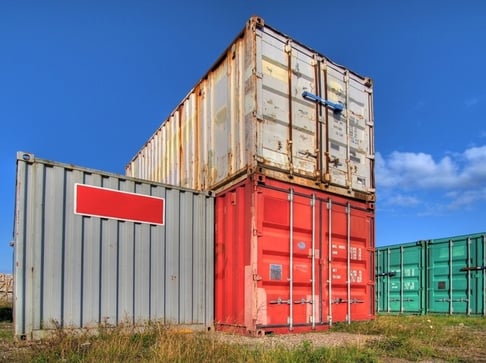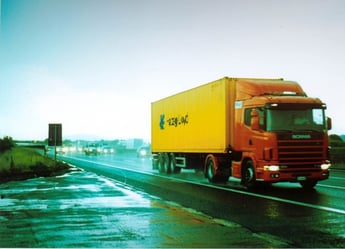Industry Secrets for An Awesome Transportation Strategy
Industry Secrets for An Awesome Transportation Strategy "Victorious warriors win first and then go to war, while defeated warriors go to war first...
3 min read
 Chadwick Heard
:
Jul 6, 2016 11:10:40 AM
Chadwick Heard
:
Jul 6, 2016 11:10:40 AM

Shipping runs the world, commerce, and economy. It's like the wizard standing behind the curtain in the Wizard Of Oz, silently fufilling our every need and desire. What happens when the magic is gone? What happens when things don't run smoothly and you have a hiccup? We've identified a few missteps that may complicate the process.RBW has been in the warehousing business for over 60 years. We've seen a thing or two...
Detailed below are seven common mistakes that can complicate the shipment process, so you can avoid them before they happen.
Imagine how this can impact the shipment process. Actually, we're being a bit facetious. It's pretty obvious how this can affect shipments.
Here's a scenario: you're the manager of a warehouse, and you have a client that manufactures cookies. They make all kinds -- oatmeal, chocolate chip, sugar, ginger snaps, etc.
Your client sends you 30 truckloads that hold a mixture of cookies on Monday. They send you 50 truckloads on Tuesday, and finally 70 truckloads on Thursday.
You store these cookies for your client for three weeks, until it is time for their product to turn. They put in a request for you to ship 20 truckloads of sugar cookies to Wichita, Kansas on Friday. Cookies don't last for forever, though. They have a shelf life for freshness. So, your client requests you to pull 30 truckloads of FiFO (First In, First Out) oatmeal cookies.
Each day's shipment held a variety of product, so you can't just send 20 truckloads from Monday. Furthermore, let's say that an admin in your warehouse had a bad day, and incorrectly labeled your boxes. They forgot to give a unique code for date, cookie type, and whatever other relevant information was needed. Your shipment process has suddenly become a nightmare. Clearly, incorrect labeling can have serious consequences.
 Data entry error is another commonly occurring problem. Human beings aren't perfect and mistakes are bound to happen from time to time. If an associate enters in the wrong information into the WMS (for example, they transpose two numbers), the shipment receipt for a specific product does not match any numbers in your WMS.
Data entry error is another commonly occurring problem. Human beings aren't perfect and mistakes are bound to happen from time to time. If an associate enters in the wrong information into the WMS (for example, they transpose two numbers), the shipment receipt for a specific product does not match any numbers in your WMS.
What do you do?
Here is another common data entry error. An associate does not completely fill out all fields in your WMS. This may simply be an oversight, or perhaps the associate does not realize the importance of a piece of data. This kind of error can start a domino effect within your business analytics. What if you wanted to start tracking a new KPI to analyze ways to save the company money? This one small field inside of your WMS may have not been beneficial before, but with this new metric, it becomes integral.
Even worse, what if the associate is not consistent entering of data into the fields? Your metric becomes useless.
Certain technologies can be used to make mistakes like these less frequent. EDI (Electronic Data Interchange), for example, transfers the information from one database to another.
No Shipment Verification Process
If there is not a shipment verification process set in place by the warehouse operators, it can negatively impact shipments. There should be a set process in place, and everyone should be aware of what that process entails. Not only this, but management needs to enforce this process to ensure that it is followed.
The benefits of this are pretty obvious. As with data entry errors, people make mistakes. Even the most experienced and careful operators slip up from time to time. Putting a double count process in place means that if one person misses an error, the other will catch it.
At RBW Logistics, we have a double count process. The forklift operator counts the product once it has been moved. Next, someone else counts and verifies the product code, like a shift lead, an administrator, or another forklift operator.
Late Carriers
Transportation can be a very unpredictable link in the supply chain, so late carriers are commonplace. There are many variables that could prevent a driver from showing up to a warehouse on schedule.
Can you imagine an shipment being scheduled for 1PM and the driver not arriving until 4 PM? Imagine the holdup of resources.
How can something like this be prevented? It comes down to communication. As things happen in the supply chain that may disrupt the arrival times of drivers, this information needs to be communicated throughout the supply chain so each link in the chain can adjust.
Poor Packaging Design

When boxes rip and tear, or there are holes in a box, it clearly makes handling the product a lot harder. It also makes the handler fearful of damaging the product. This causes you to be more cautious than usual. Caution requires you to spend more time handling, loading, staging, and unloading the product. These small inefficiencies create a time-management ripple effect throughout the entire supply chain.
Shortening of Shipments
This issue can be found on inbounds or outbounds. What happens when expect seven inbounds and you only get five? A witch hunt begins through the supply chain to ascertain where the discrepancy is located, which costs time and money to correct, as well as complicating the shipment and warehousing process.
Shipments To Wrong Address
 Yes, this happens. Shipments can go to wrong address, costing the shipper, client, or warehouse big time. It is a waste of resources, so this information has to be correct. Sometimes the root of this can be an incorrect label, or something as simple as the truck driver misreading the delivery address.
Yes, this happens. Shipments can go to wrong address, costing the shipper, client, or warehouse big time. It is a waste of resources, so this information has to be correct. Sometimes the root of this can be an incorrect label, or something as simple as the truck driver misreading the delivery address.
RBW hopes that by identifying these seven common mistakes, you can take measures to streamline and improve your operations.

Industry Secrets for An Awesome Transportation Strategy "Victorious warriors win first and then go to war, while defeated warriors go to war first...

Your best teacher is your last mistake. - Ralph Nader The power of the cycle count runs deep and strong! It's indeed a worthy champion to slay your...

Transportation managers who adopt holistic views of operations can improve efficiency, deliverables and public relations. Part one covered how to...